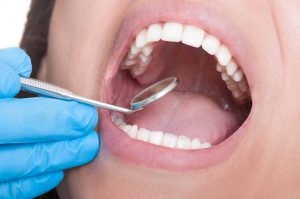 If you’ve ever witnessed a family member lose a tooth or several, you’ve probably seen their lifestyle and habits change as well. Teeth help you to digest your food by chewing effectively and also play a big part in your ability to pronounce your words. Every component of your mouth is important and it’s equally important to understand the function of each tooth. Your Sapulpa dentist understands that you’re more likely to take better care of your teeth and gums when you can truly appreciate how each methodically developed tooth plays a role in your quality of life. After all, every type of strong tooth makes for a healthy body and gorgeous smile.
If you’ve ever witnessed a family member lose a tooth or several, you’ve probably seen their lifestyle and habits change as well. Teeth help you to digest your food by chewing effectively and also play a big part in your ability to pronounce your words. Every component of your mouth is important and it’s equally important to understand the function of each tooth. Your Sapulpa dentist understands that you’re more likely to take better care of your teeth and gums when you can truly appreciate how each methodically developed tooth plays a role in your quality of life. After all, every type of strong tooth makes for a healthy body and gorgeous smile.
Incisors
These are at the forefront of your smile. Some dentists call this “the aesthetic zone” because that’s what others notice about your smile first. Besides showing off your smile, incisors are the teeth that you use to take bites out of your food. Typically, incisors are one of the first types of teeth to burst through your gums and stick with us the longest. The best way to take care of them is to:
- Brush and floss regularly.
- Wear a mouthguard when participating in anything active (most sports-related dental injuries over in the front teeth).
- Visit your dentist semiannually to get them professionally cleaned.
Canines
The next in line for tooth development are your canine teeth. Most patients playfully know them as “vampire teeth.” These are the sharpest teeth in your smile and bare the purpose of tearing food apart. The best way to care for canine teeth is to:
- Brush and floss regularly—especially floss because tough foods can get stuck between these teeth.
- Visit your dentist semiannually for a checkup and professional cleaning.
Molars
These teeth are formally known as “bicuspids.” Their primary function plays a crucial role in the digestive system by being the first step in breaking down food—chewing and grinding food. You have four premolars (two on the upper jaw and two on the lower jaw) and then the second set of permanent molars grow in behind those.
If you’ve ever seen someone with tooth pain in their back teeth or even missing a molar, their quality of life dramatically diminishes. So, it’s important to care for your molars like this:
- If you can floss between these teeth. Dr. Mohanna and Dr. George know it can be difficult to reach further back in your mouth, but there are tools that can make flossing easier.
- Remove as much food and bacteria as possible by brushing regularly.
- Visit your dentist for semiannual dental checkups and professional cleanings.
Third Molars
Most patients recognize these teeth by the name “wisdom teeth.” These are the last teeth to develop and don’t usually break through your gums until you’re a young adult. Your third molars are there to help with the digestive system as well with breaking down food.
A lot of patients experience dental issues when they start to come in like overcrowding. In that case, your dentist can perform an easy, practically painless wisdom tooth extraction to help you maintain good oral health. When it comes to your third molars, remember these things:
- They are meant to be a functioning part of your smile, but your dentist will recommend removing them if they have issues growing in properly.
- Brush and floss especially good as they come in to avoid bacterial infections.
- Visit and openly communicate with your dentist about your adult teeth growing in.
Complete Cosmetic Care Dentistry doesn’t want you to take any component off your smile for granted. Our teeth play important roles in our lives. Visit your dentist at our Sapulpa office to check on the development and maintenance of your teeth today.
